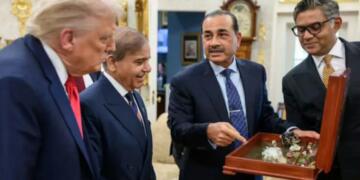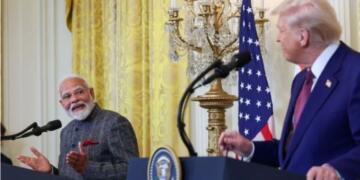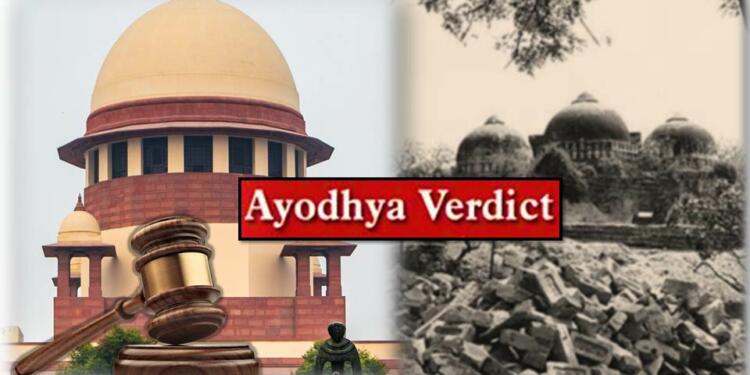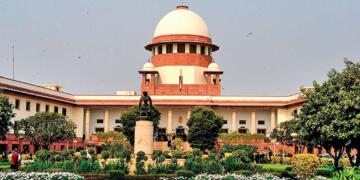Ismail Farooqui vs Union of India: Hindus are the majority in this country, and modern democracy discriminates against every majority. The official excuse is that this is positive discrimination to protect minorities. Despite good intentions, constantly caving to one party can be detrimental to others. This is what was happening to Hindus’ right to worship in Ram Mandir. Thanks to the huge public demand, the court had to delve deeper into the issue.
The act brought to protect the disputed site
Just after the demolition of Babri Masjid, PM Narsimha Rao released his condemnation in the form of a White Paper. He also sought the Supreme Court’s opinion, as mandated under Article 143(1) of the Constitution.
Additionally, to maintain peace and tranquillity, the government passed an ordinance called the “Acquisition of Certain Area at Ayodhya Ordinance.” It enabled the central government to acquire 67.7 acres of land in and around the disputed site of Ayodhya. Later, it was changed into an act.
Under Section 3 of the Act, the Central government took rights and titles of the disputed land. The word used for this purpose was “vest.” The very next section left no scope for any party to claim ownership of anything on the disputed land. Virtually everything under the sun and part of the 67.7 acres of the plot were now under the government’s control.
Moreover, with Section 7, the government put restrictions on itself by stating that the nature of the structure as it existed on the day on which this act was enacted will be maintained. In other words, the government could not declare it to be the Ram Mandir or the Babri Masjid.
Also read: 2022, Jacob Puliyel vs. Union of India: Supreme Court dictum on mandatory Covid vaccination
The bone of contention for petitioners
The act was challenged in the Apex Court. Dr. Ismail Farooqui and his co-petitioners (Ismail Farooqui vs Union of India) contend that the government brought the act under the ambit of Concurrent list. According to him, since the act was designed to maintain public order in a state, that is why the state government could bring this act under state list.
They also contended that by freezing the date of the legal status of the structure after the demolition of the Babri Masjid, the attack on the Muslim community was being validated. According to them, the legislation was tilted in favour of Hindu interests. To substantiate their argument, they cited more than 400 years of their claim on the land housing the Babri Masjid. Sections 3, 6, and 7 were the most contentious for the petitioners.
The central government had the power to do it
The Court was quick to quash the question about the jurisdiction of the central government regarding the Act. The act was brought for the purpose of “acquisition of property,” which is part of Entry 42 of the concurrent list.
The court denied the argument that the pith and substance of the act was “public order.” The Apex Court relied on State of Bihar v. Maharajadhiraja Sir Kameshwar Singh of Darbhanga and Dy. Commr. and Collector, Kamrup v. Durga Nath Sarma to reach these conclusions.
Masjid is not part of essential religious practice
The next question was whether the government was right in acquiring the place of Masjid. The court held that the religious freedom available to citizens under Articles 25 and 26 does not take away the government’s right to acquire certain property.
The Court then applied some brakes on freedom of religion by stating that Articles 25 and 26 do not confer the permanent right to acquire or own property. Such protection is available to only essential and integral practices of religion.
To offer Namaz at any place, it has to be held in reverentially higher pedestal to Islamic practices. In other words, if the Babri Masjid had some special connection with an Islamic saint or even the Prophet Muhammad himself, offering Namaz inside it would be called an essential practice of Islam.
The party then contended that Masjid has a special place in Islam. However, the Apex Court cited Mohammedan law and held that title to the Masjid can be lost by adverse possession. Additionally, it was also held that the Masjid is not an essential part of Islam since Namaz can be offered anywhere, even in the open. The court held that under Articles 25 and 26, the Mandir, Masjid and Church are to be treated on the same pedestal.
Act was not anti-Muslim
Now, the question was whether the act was anti-Muslim to begin with. To answer this question, it was crucial to decipher the meaning of the word “vest,” used for the acquisition of property by the government.
According to the court, the word is of slippery import and has many meanings, as was enunciated in the Maharaja Singh Case. Ultimately, the matter narrowed down to checking the validity of Section 7(2) of the act. This section was used to freeze the status as existing on January 7, 1993.
The Apex Court termed it a “transitory provision” “intended to maintain status quo in the disputed area.” It was observed that the property was in dispute as the true owner was not known at that time. A change in the situation could complicate and make it more tedious to arrive at a solution.
Also read: 2018, Joseph Shine vs. Union of India: The assault over institution of marriage
It affected both parties
The next big contention was whether the status quo was tilted in favour of the Hindu side in the dispute. The Apex Court said it was not. For this, the court went into the history of the structure. It observed that, though the status of their right was unknown at that time, Muslims had not been using the disputed site to worship their almighty since December 1949. Moreover, they had not objected to the worship of Murtis installed on the Ram chabutra.
Delving further into the history of Ayodhya, the Apex Court said that both Hindus and Muslims were equally affected by the act. Apparently, while Muslims considered it divine owing to Mughal Emperor Babur, for Hindus the exact date of divinity could not be traced. Simply because the place being the birthplace of Bhagwan Ram is an established fact and no one has ever contented it.

In further paragraphs, the Court went on to establish true equality in both the daily moral sense and the constitutional sense. The Act was held valid and hence prevented deformation of the site by anti-social elements. It became the foundation for his bhakts’ legal establishment of the grand Ram Mandir today.
Support TFI:
Support us to strengthen the ‘Right’ ideology of cultural nationalism by purchasing the best quality garments from TFI-STORE.COM
Also Watch:
https://www.youtube.com/watch?v=Vvtg89mYfng&t=13s

































